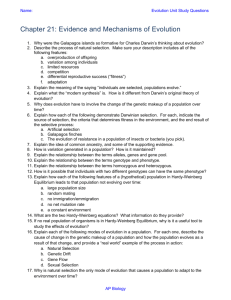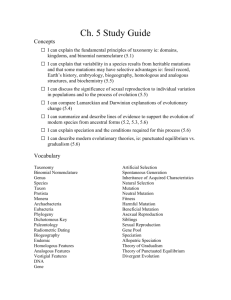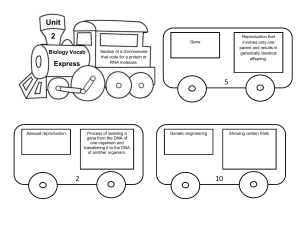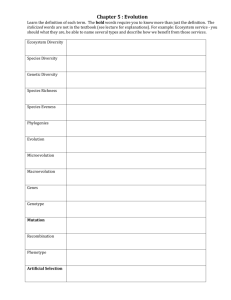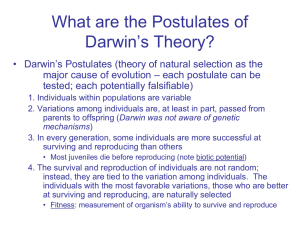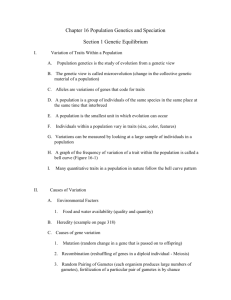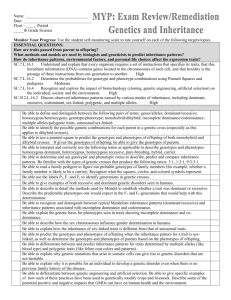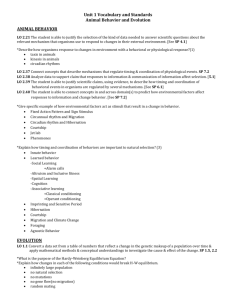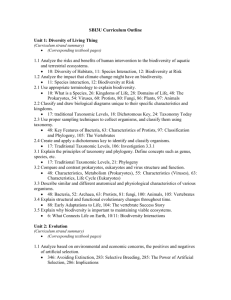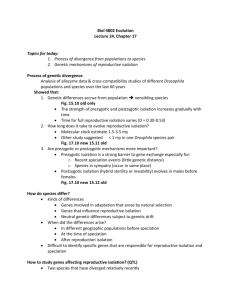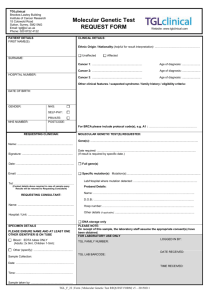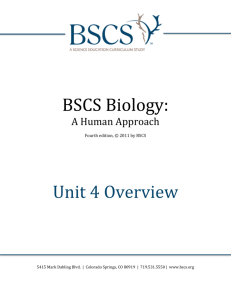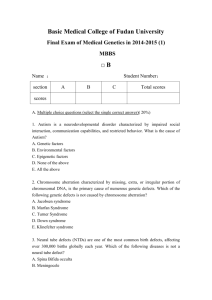H.2L.5 Evolution Assessment
advertisement
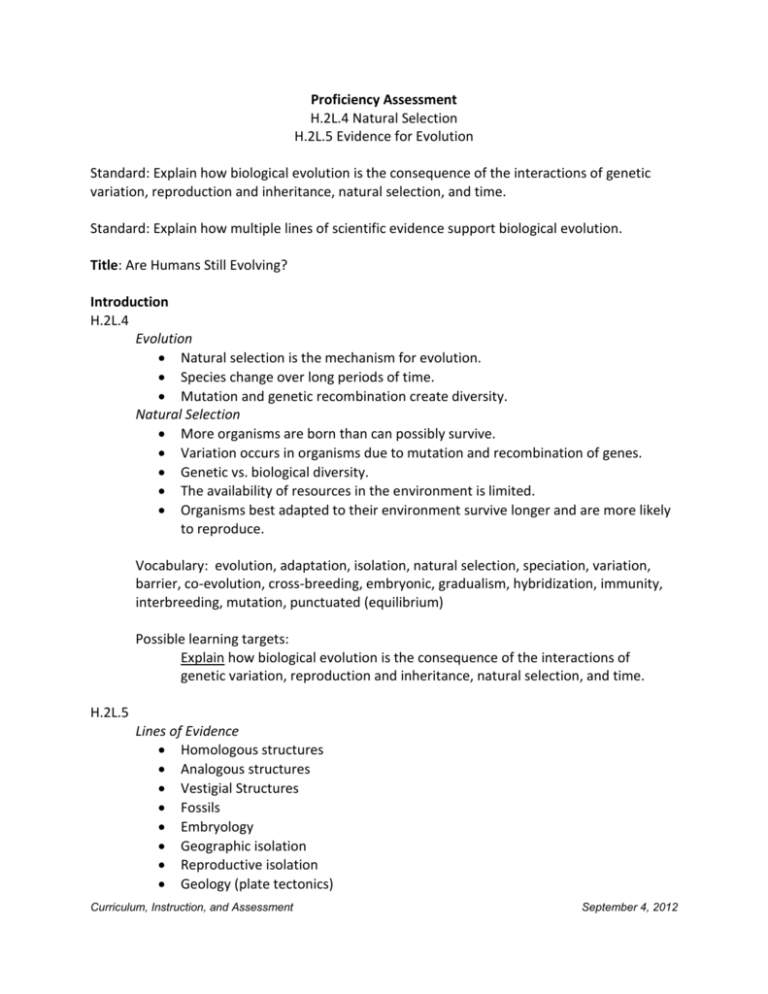
Proficiency Assessment H.2L.4 Natural Selection H.2L.5 Evidence for Evolution Standard: Explain how biological evolution is the consequence of the interactions of genetic variation, reproduction and inheritance, natural selection, and time. Standard: Explain how multiple lines of scientific evidence support biological evolution. Title: Are Humans Still Evolving? Introduction H.2L.4 Evolution Natural selection is the mechanism for evolution. Species change over long periods of time. Mutation and genetic recombination create diversity. Natural Selection More organisms are born than can possibly survive. Variation occurs in organisms due to mutation and recombination of genes. Genetic vs. biological diversity. The availability of resources in the environment is limited. Organisms best adapted to their environment survive longer and are more likely to reproduce. Vocabulary: evolution, adaptation, isolation, natural selection, speciation, variation, barrier, co-evolution, cross-breeding, embryonic, gradualism, hybridization, immunity, interbreeding, mutation, punctuated (equilibrium) Possible learning targets: Explain how biological evolution is the consequence of the interactions of genetic variation, reproduction and inheritance, natural selection, and time. H.2L.5 Lines of Evidence Homologous structures Analogous structures Vestigial Structures Fossils Embryology Geographic isolation Reproductive isolation Geology (plate tectonics) Curriculum, Instruction, and Assessment September 4, 2012 Genetic (DNA) Biochemical (Amino Acid Sequence) Vocabulary: homologous structures, vestigial structures, analogous structures, fossils, reproductive isolation, convergent evolution, divergent evolution, mitochondrial DNA Possible learning targets: Explain how multiple lines of evidence support biological evolution. Assessment Designed to allow students to make an evidence-based, evaluative statement on the action of evolution in modern life, this writing activity will allow students to fully describe the process of evolution as it may occur in a single species, including multiple lines of evidence. Type: Essay Time needed: 1-2 class periods Materials: Paper and pencil – can be typed at teacher’s discretion Directions: Deliver student task description and scoring guide to students. Give them time to write. Possible adaptations: Choose a different species. Student Handout Are Humans Still Evolving? On a blank piece of notebook paper, write your answer in multiple paragraphs addressing: Are humans still evolving? Are there individual traits that may or may not be evolving? Explain. Are there traits that may or may not evolve based upon societal factors (where someone lives provides different access to medicine and nutrition, for example)? Why or why not? Are there traits that, on their surface, should disappear from a population but continue to reappear? Why or why not? Are there traits that can now be artificially selected through biotechnology? Are humans undergoing speciation? Why or why not? Curriculum, Instruction, and Assessment September 4, 2012 Check list H.2L.4 and H.2L.5 Evolution and the Age of the Earth Include the Following Heading Title Name (First and Last) Date Class Elements Spelling Conventions (capitalization, punctuation, paragraphs) Use vocabulary from state standard: evolution, adaptation, isolation, natural selection, speciation, variation, barrier, co-evolution, crossbreeding, embryonic, gradualism, hybridization, immunity, interbreeding, mutation, punctuated (equilibrium) See Directions/procedures Scoring See rubric Format Written explanation Curriculum, Instruction, and Assessment Evidence = X September 4, 2012 Scoring Guide H.2L.4 Natural Selection H.2L.5 Evidence for Evolution Standard: Explain how biological evolution is the consequence of the interactions of genetic variation, reproduction and inheritance, natural selection, and time. Standard: Explain how multiple lines of scientific evidence support biological evolution. Score Description: 4.0 Exceeds Evaluate the impact of the interactions of genetic variation, reproduction and inheritance, natural selection and time on biological evolution. 3.5 Can complete level 3.0 and can partially complete level 4.0. 3.0 Meets Explain how biological evolution is the consequence of the interactions of genetic variation, reproduction and inheritance, natural selection and time, using multiple lines of supporting scientific evidence. 2.5 Can complete level 2.0 and can partially complete level 3.0 or 4.0 2.0 Nearly meets Describe the process of biological evolution through natural selection. 1.5 Can complete level 1.0 and can partially complete level 2.0, 3.0, or 4.0. 1.0 Beginning Recognize that species have changed over time, with help 0.5 Can produce some evidence of basic knowledge, with help. 0.0 Has no understanding Cannot provide any evidence of knowledge or understanding, even with help. Curriculum, Instruction, and Assessment September 4, 2012
